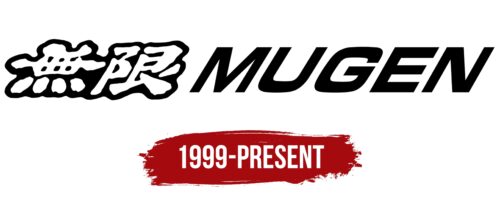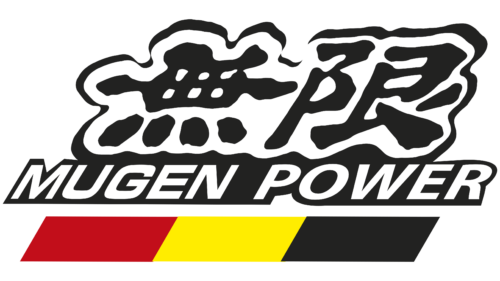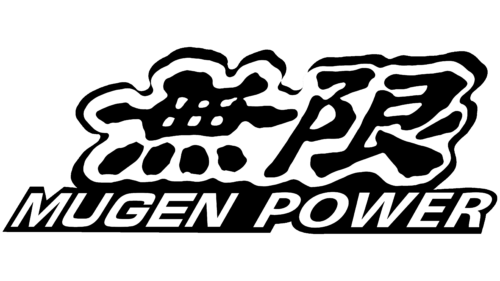The Japanese company associated with the automotive industry uses an emblem that embodies speed. Even though the Mugen logo is static, it has internal dynamics. It is evident in the forms and arrangement of basic elements.
Mugen: Brand overview
| Founded: | 1973 |
| Founder: | Hirotoshi Honda, Masao Kimura |
| Headquarters: | Asaka, Japan |
| Website: | mugen-power.com |
Meaning and History
Visual recognition is at a high level among lovers of pumped cars. The logo has hardly changed since the brand was founded, and therefore the company’s customers can recognize it even from a long distance.
A feature of the logo, when compared with competitors, is that it contains a verbal inscription in two languages. The central area is occupied by the English version of the name, while Japanese characters have been added to the left.
What is Mugen?
This is a Japanese brand that specializes in tuning Honda cars and also makes custom accessories for street racing enthusiasts.
It is worth noting that, in fact, for the entire time, the target audience was presented with two versions of the logo. However, the original version practically did not differ from the current one. At the same time, it is worth noting that the English version was made in dark gray-black colors. The name used a classic sans-serif typeface with straight and bold lines. All letters in the title were capitalized. Also, italics were present, which is noticeable in the fact that all letters are turned slightly to the right. Japanese characters were also made in the classic version for the Asian market.
Already in the 90s, the company began to use a slightly modified version. The Japanese characters were identical, in white with black outlines. At the same time, the English version began to look more concise and minimalistic. The lines in the letters were much smaller, and only black was used to write them. All characters have been rotated slightly to the right, indicating italics. Overall, the Mugen logo was more readable and could now be placed on any surface. However, at the same time, the uniqueness of the verbal inscription, which distinguished the company from competitors, was also lost, including during sports competitions.
If we analyze the logo in more detail, we can see that the inscriptions in the two languages are placed to each other at a minimum distance. Thus, the unity of the two cultures is demonstrated. Moreover, both versions fit into one black rectangle. While dwelling on the color palette, it is worth noting that starting from the 1990s, golden-black stripes began to appear on the logo more and more.
Font and Color
The company’s name first used a unique and modern bold italic typeface, which over time became more modest, but at the same time, became much more readable.
The company initially settled on a black and white color palette, which characterized it as stable and progressive, but recently additional elements have occasionally appeared.
Mugen color codes
| Black | Hex color: | #000000 |
|---|---|---|
| RGB: | 0 0 0 | |
| CMYK: | 0 0 0 100 | |
| Pantone: | PMS Process Black C |






